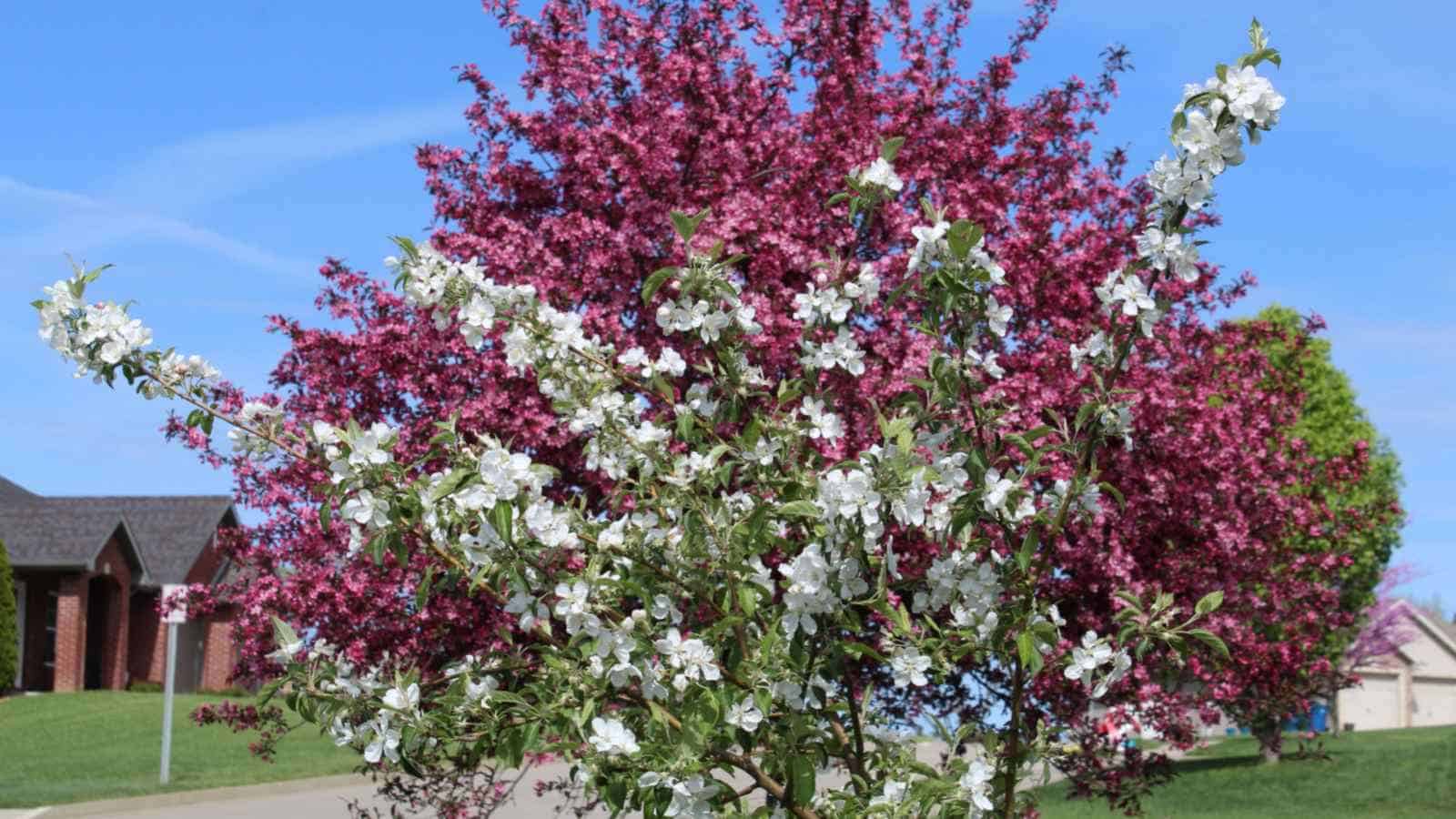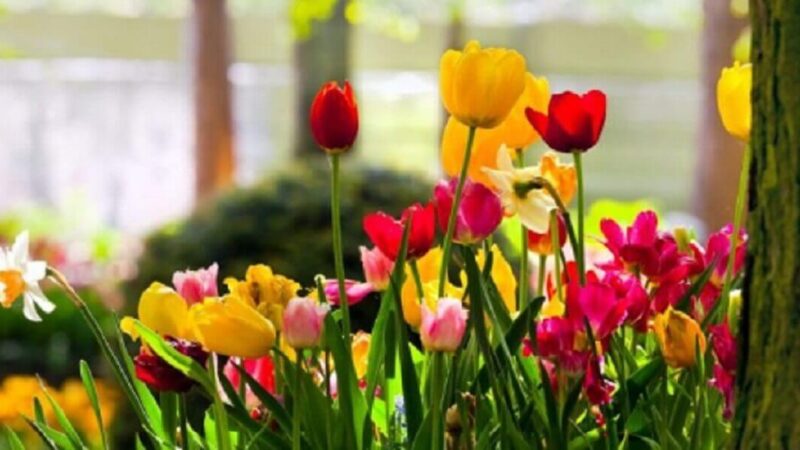Understanding the Growth and Care of Crab Apple Trees

In our pursuit of cultivating beautiful gardens and enhancing the natural beauty of our surroundings, many of us turn to trees and shrubs to provide shade, privacy, and visual appeal. Among the myriad of choices, the crab apple tree stands out as a versatile and ornamental option that can add both elegance and charm to your garden. Whether you are a seasoned gardener or just starting out, understanding the growth and care of crab apple trees can help you create a stunning and vibrant landscape that thrives throughout the seasons.
The Allure of Crab Apple Trees
Crab apple trees (Malus spp.) have been cherished for centuries for their stunning blossoms, colourful fruit, and graceful form. These small to medium-sized trees belong to the rose family, Rosaceae, and are native to various regions of the world, including Europe, Asia, and North America. In the United Kingdom, crab apple trees have long been a favourite among garden enthusiasts for their ability to thrive in a variety of conditions and their ability to provide year-round beauty.
The Varieties of Crab Apple Trees
Crab apple trees come in a wide array of varieties, each offering unique characteristics and features. When selecting a crab apple tree for your garden, consider factors such as size, flower color, fruit size and color, and disease resistance. Here are a few popular crab apple varieties that are well-suited for British gardens:
1. Malus ‘Golden Hornet’ (Golden Hornet Crab Apple)
Height: 6-8 meters (20-26 feet)
Flower Color: White
Fruit Size: Small (2.5 cm)
Fruit Color: Yellow
Disease Resistance: Good
The ‘Golden Hornet’ crab apple is prized for its profusion of white blossoms in spring and its striking yellow fruit that persists throughout the winter. Its compact size makes it ideal for smaller gardens or as a decorative addition to larger landscapes.
2. Malus ‘John Downie’ (John Downie Crab Apple)
Height: 6-7 meters (20-23 feet)
Flower Color: White with pink tinges
Fruit Size: Medium (3-4 cm)
Fruit Color: Orange-red
Disease Resistance: Good
The ‘John Downie’ crab apple is known for its charming pink-tinged white flowers and vibrant orange-red fruit. It’s a popular choice for its attractive appearance and suitability for making delicious crab apple jelly.
3. Malus ‘Red Sentinel’ (Red Sentinel Crab Apple)
Height: 5-6 meters (16-20 feet)
Flower Color: White
Fruit Size: Small (2.5 cm)
Fruit Color: Red
Disease Resistance: Good
The ‘Red Sentinel’ crab apple is celebrated for its striking red fruit that persists well into winter. Its compact size and disease resistance make it a fantastic choice for urban gardens and smaller spaces.
4. Malus sylvestris (Wild Crab Apple)
Height: 5-10 meters (16-33 feet)
Flower Color: Pink or white
Fruit Size: Small (1-2 cm)
Fruit Color: Green to yellow
Disease Resistance: Moderate
The wild crab apple is a native species known for its natural charm. While its fruit is smaller and less colorful than cultivated varieties, it offers a touch of the wild to any garden and is a valuable resource for wildlife.
Planting Your Crab Apple Tree
Once you’ve chosen the perfect crab apple variety for your garden, it’s time to get your hands dirty and start planting. Here’s a step-by-step guide to ensure your crab apple tree gets off to a healthy start:
1. Selecting a Location
Select a well-drained area in your garden that is either sunny or partially shaded. Crab apple trees prefer slightly acidic to neutral soil, so a pH level between 6.0 and 7.0 is ideal.
2. Preparing the Soil
Before planting, prepare the soil by digging a hole that is twice the width of the tree’s root ball and just as deep. Mix in organic matter like compost to improve soil fertility.
3. Planting
Gently remove the crab apple tree from its container and place it in the center of the hole. Make sure the top of the root ball is level with the ground surface. After adding soil to the hole and firmly patting it down, water the area well.
4. Mulching
Mulch the area around the tree’s base to help it retain moisture and keep weeds out. Be sure to keep the mulch away from the trunk to prevent rot.
5. Watering
Water your newly planted crab apple tree regularly, especially during dry spells. Adequate moisture is crucial during the first year of growth to establish a strong root system.
Pruning and Maintenance
Proper pruning and maintenance are essential to ensure the health and longevity of your crab apple tree. Here are some guidelines to follow:
1. Pruning
Prune your crab apple tree in late winter or early spring before new growth begins. To increase air circulation and lower the risk of disease, remove any branches that are dead, damaged, or crossing. You can also shape the tree to your desired form at this time.
2. Fertilizing
Fertilize your crab apple tree in early spring with a balanced fertilizer, and avoid excessive nitrogen, as it can promote excessive foliage growth at the expense of flowers and fruit.
3. Pest and Disease Control
Keep an eye out for common crab apple tree pests and diseases, such as apple scab, aphids, and caterpillars. Regular inspection and prompt treatment can help prevent major infestations.
4. Fruit Thinning
If your crab apple tree produces an abundance of fruit, consider thinning them out when they reach the size of a small marble. This will help prevent overcrowding and ensure larger, healthier fruit.
5. Deadheading
After the flowering period, remove spent blossoms to encourage new growth and potentially a second flush of flowers.
Enjoying the Fruits of Your Labour
One of the most delightful aspects of crab apple trees is the ornamental value they bring to your garden throughout the year. Let’s take a closer look at what you can expect during each season:
Spring:
As the weather warms, your crab apple tree will burst into a profusion of blossoms. These blossoms can range from pure white to pink, and they often emit a sweet fragrance that attracts pollinators like bees.
Summer:
After the flowering display, small green fruit will begin to form. These will slowly grow and change in color over the summer months, adding visual interest to your garden.
Autumn:
As autumn arrives, your crab apple tree will reach its full glory as the fruit ripens. Depending on the variety, the fruit can range from yellow to red, and it often remains on the tree well into winter.
Winter:
Even in the depths of winter, crab apple trees offer visual interest with their colorful fruit, which can persist long after the leaves have fallen. Additionally, the fruit serves as a valuable food source for wildlife during the colder months.
Conclusion
Crab apple trees are a captivating addition to any garden, offering beauty, versatility, and the joy of watching the seasons unfold through blossoms and fruit. By understanding their growth and care requirements, you can cultivate a stunning and vibrant landscape that will be the envy of your neighbors. Whether you’re looking for a focal point in your garden or simply want to add a touch of elegance, consider planting a crab apple tree and enjoy the rewards of nature’s beauty year-round. So, roll up your sleeves, dig in the dirt, and let your crab apple tree flourish, creating a harmonious and picturesque haven right in your own backyard.






